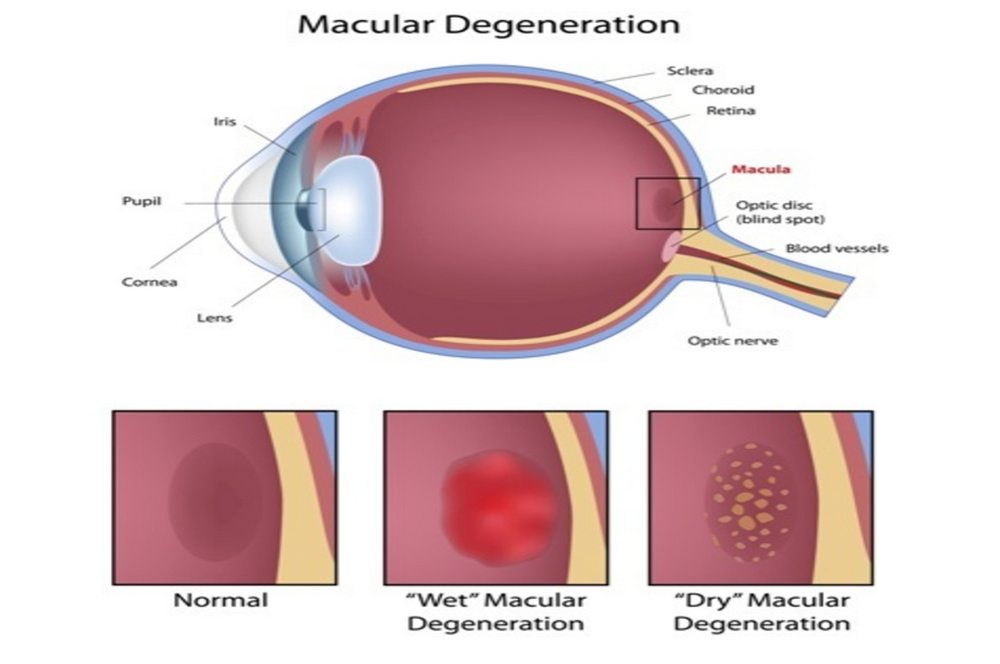Types of Macular Degeneration

Macular degeneration is classified into two types.
Wet macular degeneration
Dry macular degeneration
Approximately 85 to 90% of the cases of macular degeneration are of Dry while almost 10 to 15% population seems to have a wet type.
Wet Macular Degeneration
Wet macular degeneration can appear suddenly with no symptoms of pain. The individual might feel problems with his eyesight. At the start, the person with macular degeneration notices blurred and distorted vision. The blurred vision can include a blind spot in the center field of vision. This blind spot can be black, grey, or even red. For example, a person with wet degeneration, when he looks at a clock, will be able to see the sides of the clock, including numbers but might not be able to see the mid area of needles.
In wet age-related macular degeneration (AMD), abnormal blood vessels, also known as choroidal neovascularization (CNV), start to grow in the macula, which is a small portion of the retina located in the central area of the retina. Macula provides the ability to see fine details and is responsible for central vision. The blood vessels formed under and into the macular portion of the retina are very fragile and often leak blood and fluid. The blood and fluid leak changes the position of the macula from normal and raises it a bit at the back of the eye.
It interferes with the function of the retina and causes the scarring of the macula, which results in rapid loss of central vision. Under such conditions, vision loss can be severe. However, some patients might not notice any visual changes except choroidal neovascularization (CNV). The periodic eye examination is recommended to the patients who are at risk of CNV.
If CNV has developed in one eye, there are very strong chances that the other eye will go through the same changes, and CNV will develop in that eye too, no matter if there is any visual loss or not.
The CNV in all the wet macular degeneration causes loss of vision. Wet macular degeneration does not show stages like dry macular degeneration. The vision loss in wet form is greater than that of dry form, and people who have dry macular degeneration are at high risk of developing wet form too.
Dark spots in the mid of the eye affect the vision. The objects seem to change shape and size; the color of objects might seem to disappear or fade.
The person with wet macular degeneration finds glaring light colors uncomfortable and has difficulty in moving from a darker to a lighter environment. Irritation in eyes can also be observed when tried to change the location from dark to a bright environment
The person will have difficulty in reading and writing, and straight lines may seem to be bent like the door frame, and streetlights may appear distorted. This symptom is very common in wet macular degeneration.
Dry Macular Degeneration
In dry macular degeneration, the breakdown of light-sensitive cells of macula occurs. When there is less functioning macula, the central vision starts to diminish. Dry AMD mostly occurs in just one eye, but later on, it can affect the other eye too. The cause for dry macular degeneration is still unknown, but it is said to be related to retinal drusen.
Retinal Drusen- These are yellow deposits under the retina. They appear in later stages of life, almost at 60 years of age. The retinal drusen can be observed during a dilated eye exam. Drusen alone are not responsible for causing loss of vision. Scientists are not sure about the connection between drusen and AMD. But the dry form of macular degeneration is associated with the number of retinal drusen. During an eye examination, the drusen count has been observed to be high in people with dry macular degeneration.

